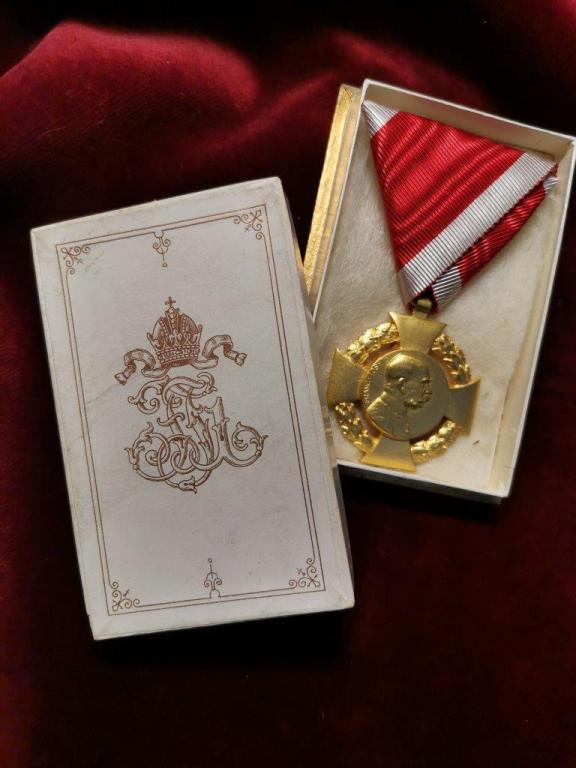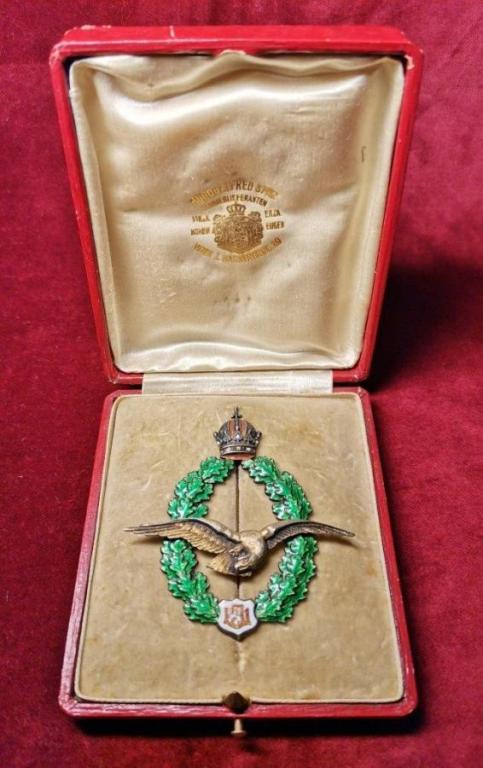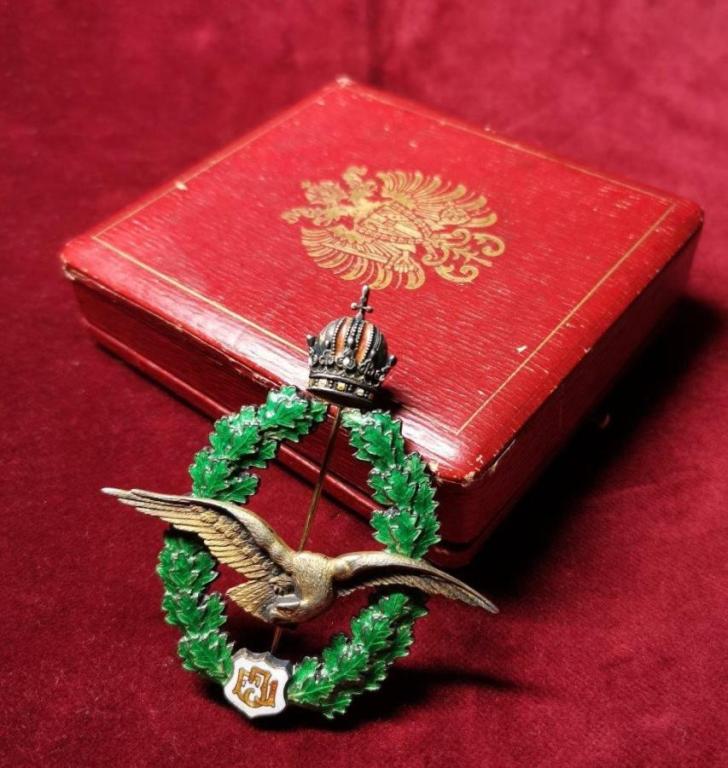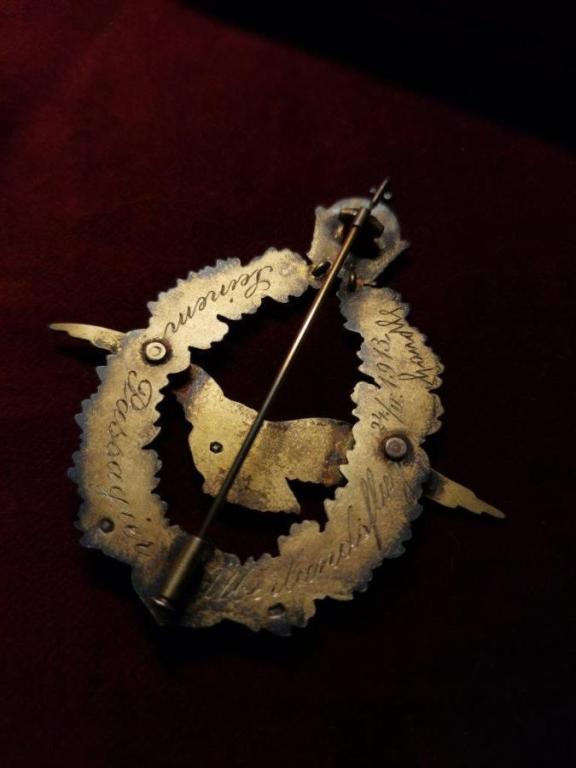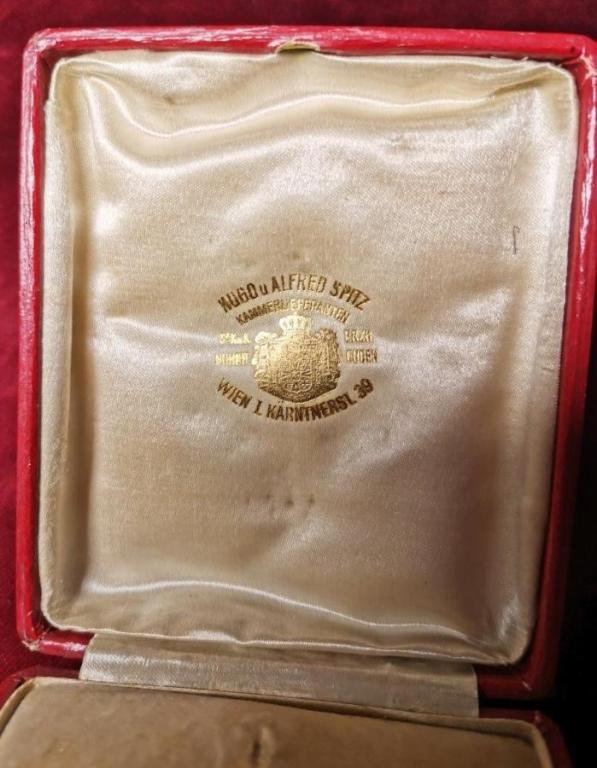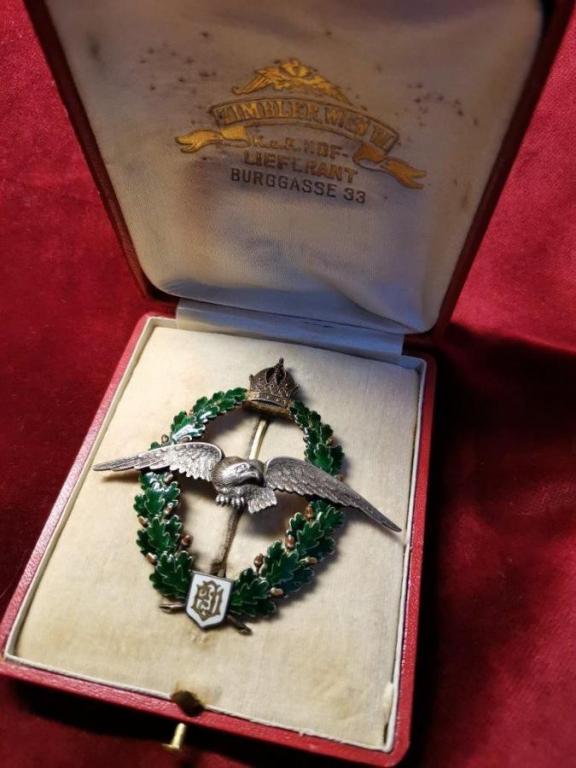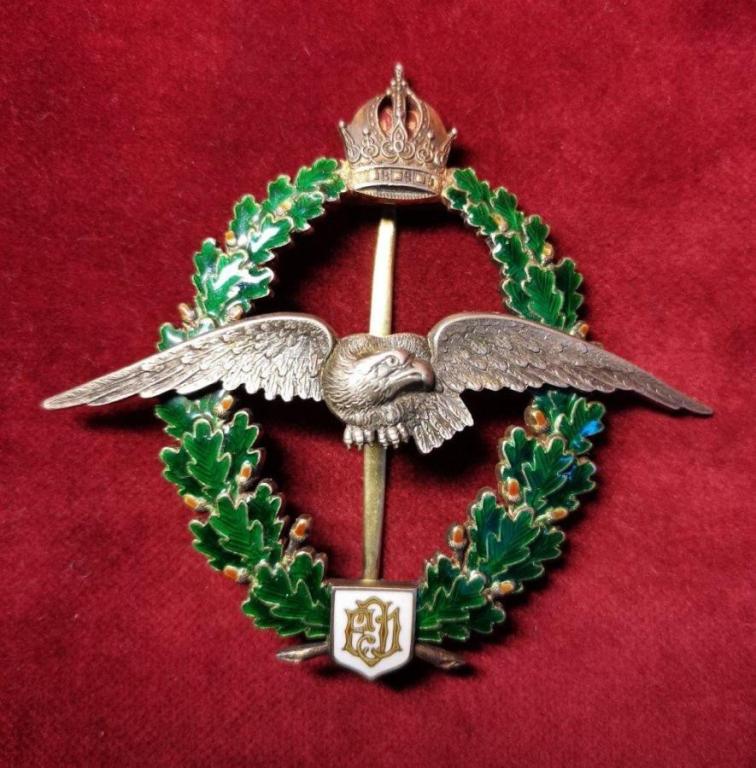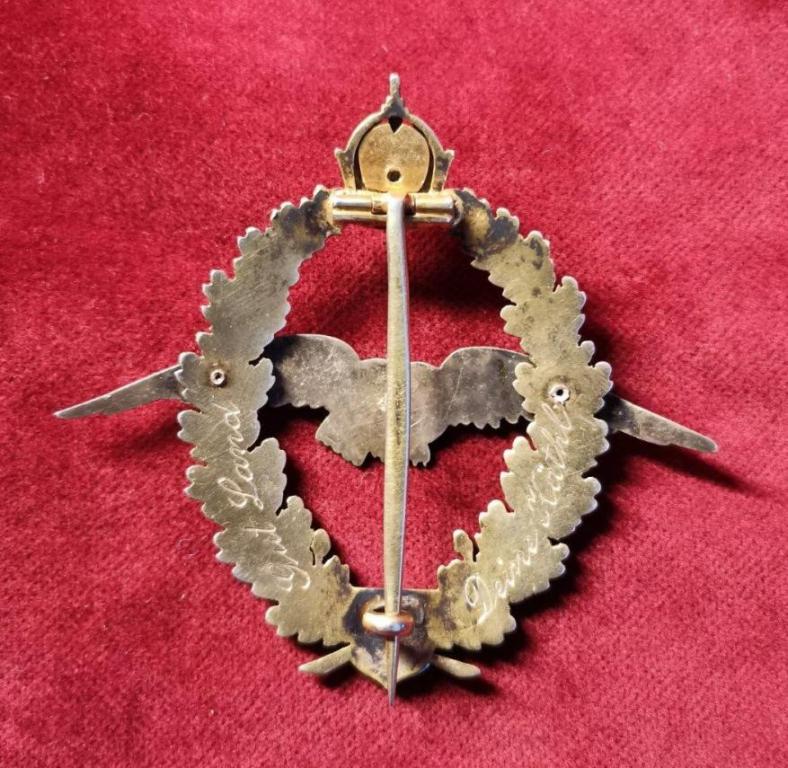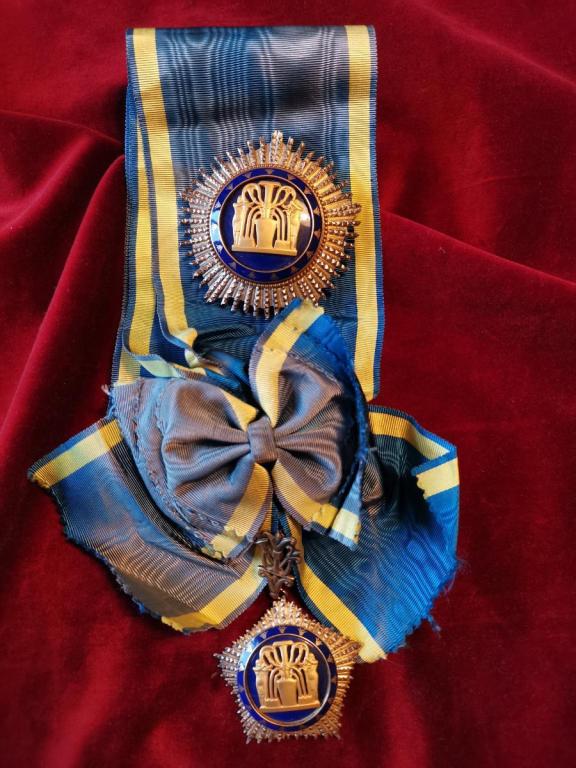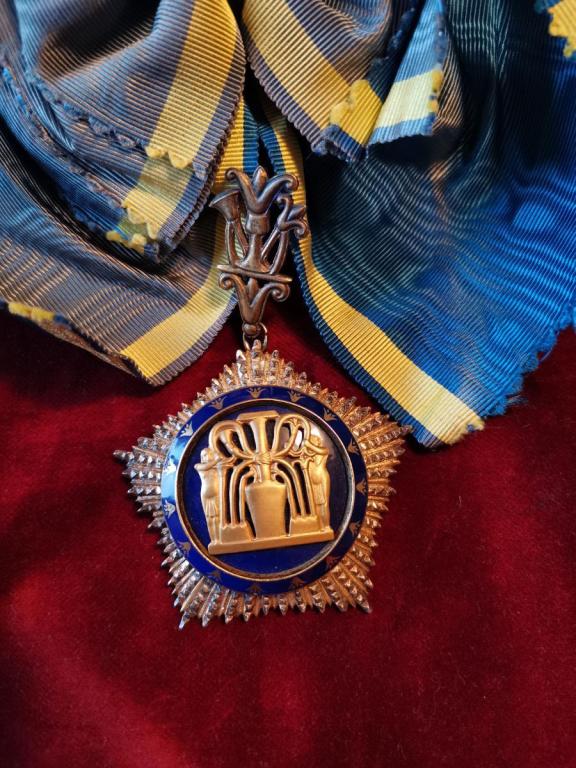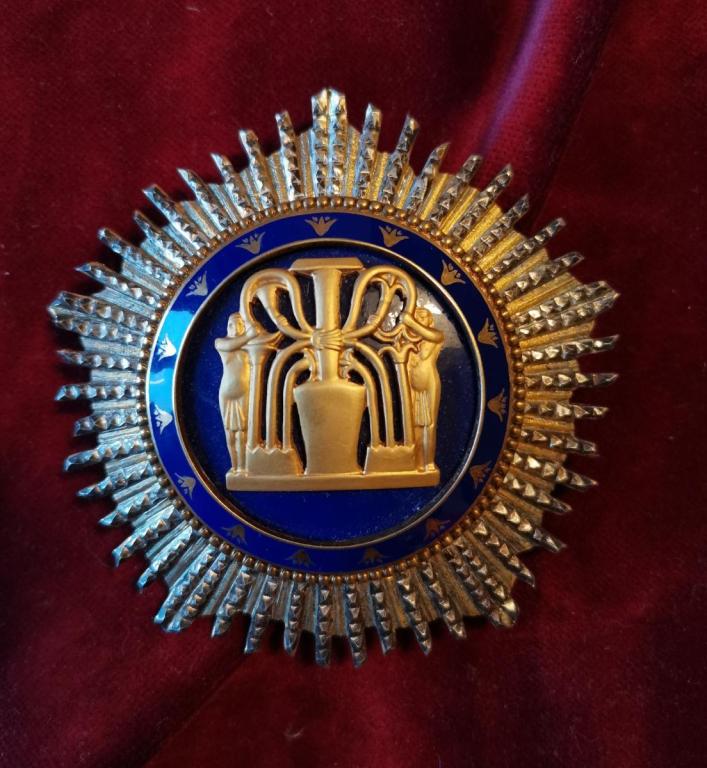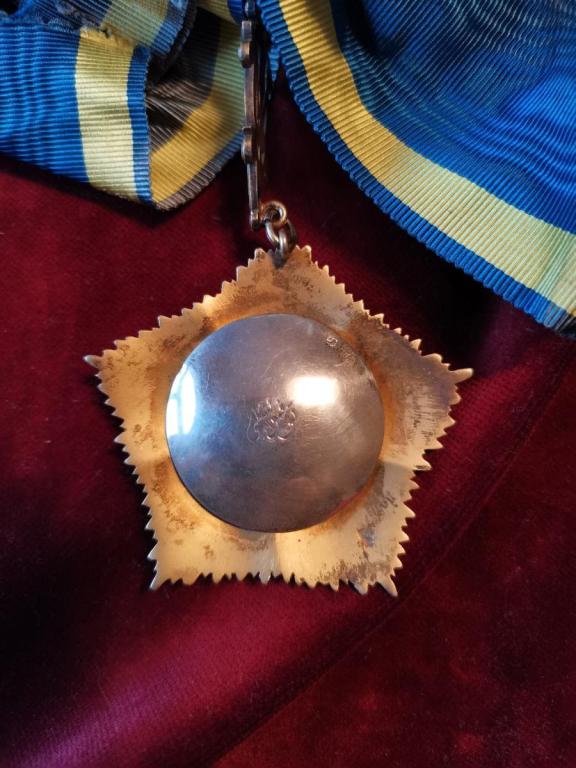-
Posts
1,161 -
Joined
-
Last visited
-
Days Won
17
Content Type
Profiles
Forums
Blogs
Gallery
Events
Store
Everything posted by Elmar Lang
-

need help to identify iron crown
Elmar Lang replied to wangyaokang2003's topic in Austro-Hungarian Empire
Well, a "fake" is properly a piece made to deceive a collector. Those made post-WW1 by Messrs Rothe & Neffe of Vienna (once official makers of Orders and Decorations to the Habsburg Crown), were copies made for collectors, which production discontinued in the mid-'70s. They were made with the original dies and tools and often, they are very well made. In any case, a post-1918 piece, although if made by the original maker, is not to be considered as an original, but as a copy (and its price, according to that). If a copy made by Rothe is sold as being an original (and the seller knows the truth)... well, in that case we can consider it as a fake... Waiting for further images, all the best, E.L. -

need help to identify iron crown
Elmar Lang replied to wangyaokang2003's topic in Austro-Hungarian Empire
From what I can see in the picture, the laurel wreath of the Kriegsdekoration looks like being of the postwar type, for it is not enameled to the reverse and without any engraving under the translucent, green enamel to the wreath's obverse. The pictures don't help much to understand a further detail: are the two halves forming the lombardic crown with a sharp edge where they're soldered at left and right, or are they smoothly rounded? From what I can see, I fear an early reproduction made by Messrs. Rothe & Neffe, Vienna, or an upgraded WW1 piece, by adding a later made Kriegsdekoration. Best wishes, Enzo (E.L.) -

need help to identify iron crown
Elmar Lang replied to wangyaokang2003's topic in Austro-Hungarian Empire
I think that many of us in this room are curious and impatient to see any image of the mentioned Order of the Iron Crown... All the best, Enzo (E.L.) -

Franz Joseph 100 Year Commemorative Medal ???????
Elmar Lang replied to gjw's topic in Austro-Hungarian Empire
Hello, a "commemorative in nature" medal, can be an official, state award, when instituted by the state itself, or by it recognized and/or appointed. Then, there are unofficial medals, instituted by committees, associations, private citizens, etc. In the 1st Austrian Republic, there was no connection between the state and the Habsburg family. If I correctly remember, it was created and distributed by a group of monarchists and widely sold around as a fundraising piece, thus being a fully, unofficial medal. It should have been catalogued in both the editions (1vol. and 4vols. ones) of R. Frhr. v. Prochàzka's "Oesterreichisches Ordenshandbuch", where probably more info are given. All the best, Enzo (E.L.) P.S.: I think that buying some of the books devoted on the subject of AH awards, including the most recent, monumental work of Rest/Ludwigstorff, could always be an excellent investment. -

Franz Joseph 100 Year Commemorative Medal ???????
Elmar Lang replied to gjw's topic in Austro-Hungarian Empire
A well-known, unofficial commemorative medal. Quite finely designed, I might add. Best wishes, Enzo (E.L.) -
Hello, just as a matter of precision, this decoration is not a "medal", but a "cross", being its name "Jubiläums-Hofkreuz". Said that, I congratulate for the nice piece found, that takes its place in your collection. I would also like to continue this thread, by adding the similar piece, from my own collection, complete with its original case of issue. Best wishes, Enzo (E.L.)
-

Dad's medals.
Elmar Lang replied to Martin W's topic in Great Britain: Orders, Gallantry, Campaign Medals
Hello, I think that a first step could be doing a research in the database of the London Gazette: The Gazette | Official Public Record . There, I've been successful in finding names, awards and data of soldiers even back to the Napoleonic wars! All the best, Enzo (E.L.) -
Nice, wartime cross! Is the ring marked by Kunz, Wien or Bachruch, Budapest? All the best, Enzo (E.L.)
-
Hello, a fine medal, the one you're showing! Another one for the same fact, awarded and named to a Portuguese subject, was auctioned online, some time time ago: Great Britain - Sea Gallantry Medal (Foreign Services) 1858 - Catawiki To go deeper in your research, I think you could contact the Life Saving Awards Research Society (LSARS); the webpage is: Life Saving Awards Research Society (LSARS). Research into humanitarian awards . Nearly a decade ago, the researches and back numbers of their precious Journal, have been invaluable to me while compiling an auction catalogue's section, devoted to the Lifesaving Medals. All the best, Enzo (E.L.)
- 1 reply
-
2
-
And this is truly a beautiful group!
-
Also these old copies made by Rothe are of a sure, historical interest. Some "special" pieces, were expressely made on special order, done by Prof. Fattovich, like this one. He wanted it with a "thicker" laurel wreath, but Messrs. Rothe had this one only, amongst their original dies. This piece is excellently finished (Lot n. 106, from June 11th 2015 sale of the collection's 1st part, if I remember correctly). I know one futher piece "für wiederholte Verleihung" made by Rothe as a copy, but it's made of gilt bronze and not so well finished/enameled. To remain in the theme of the 2nd award types, I would like to post the pictures of a pre-1918 Militärverdienstkreuz II Classe/KD/Schwerter with its typical, thick wreath, indicating the repeated award. The "Fattovich Connection" of this piece is in the fact that I am deeply indebted to his and his wife's unforgettable friendship, if I have been able to acquire this piece for my collection, then moving its early steps...
-
Beautiful pieces too!
-
A beautiful piece, with original "Kleindekoration". Congratulations, Enzo (E.L.)
-
Hello, as previously noticed by Tifes, I would like to add some further info. Actually I cannot agree with the above statement from RNS, because me alone, I own two cased, engraved Feldpilotenabzeichen; one from the estate of Lt. Feldpilot Johann Mandl and another one, belonged to an until now unknown Feldpilot, received as a present from a certain "Käthl": a typical, austrian nickname for "Katharina". The "Mandl" badge, is in its original maker's, presentation case of Messrs. Spitz, Vienna, while the other one, made by Rothe, Vienna, is preserved in a Zimbler case, where the fitted, inner compartment and the lid's silk cushion reveal that the badge is stored in that case since a very long time. Both badges are made of silver with gilt details and enamels. I am also aware of other pre-1918 engraved Feldpilotenabzeichen and Luftfahrerabzeichen, now residing in private collections. As a matter of interest, I would like to post some pictures of my two badges.
- 17 replies
-
- austria-hungary
- case engraved badge;
-
(and 1 more)
Tagged with:
-
But now: Well... again forgetting the invaluable and technically documented, complete books, written by Jörg Steiner, way earlier than Mr. Edelstein's treatise. I think that perhaps some collectors still remember him while he was working about his book. Of course, I wish you all the best with the huge work you're preparing, about any aspect of the early aviation and its heroes. I would like to suggest, that writing a technical book needs that facts should be supported by documents and evidence. all the best, Enzo (E.L.)
- 48 replies
-
- austria-hungary
- signature
-
(and 3 more)
Tagged with:
-
Hello again, I find the contribution of Tifes as highly interesting, for having found a Popov who was a pioneer of aviation. But I regret to say that in my opinion the engraving to the back of the Luftfahrerabzeichen, actually should be: "Ал. Серг. Попову 1908 г."; transcripted in our characters, "Al. Serg. Popovu 1908 g.". The engraving is surely done by hand and well executed; it also show some darkening due to the years passed since it was added to the badge. So, we have two points that are sure: 1) the Luftfaherabzeichen is original; 2) The engraving is done by hand. Furthermore, I'd dare to add that: a) the badge was instituted by Emperor Karl I well later than 1908 (1917, actually); b) no Russians were flying within the Austro-Hungarian Luftfahrtruppen during WW1. I fear that unless we could obtain a sound, documented background, we should consider this piece as a fine, original badge bearing a well-engraved dedication, referring to a date prior to the institution of this type of badge. To RedNoseScout: why feeling "like being an outlier on this site"? In this room devoted to the study of the Austro-Hungarian awards, you can meet some advanced collectors and researchers, with whom start and conduct interesting conversations. I can say that in here I've always met excellent people and have learnt many interesting things that helped me advancing in this interesting sector of Faleristic. Best wishes, Enzo (E.L.)
- 48 replies
-
- austria-hungary
- signature
-
(and 3 more)
Tagged with:
-
Would you be so kind to show us one of the mentioned 1950s Zimbler badges, to be compared -obverse and reverse- with their pre-1918 counterparts? That would be highly intructive for most of us. Aside, I would like to add, that the Feldpilotenabzeichen and the Luftfahrerabzeichen, when made of silver, are always privately purchased or presented pieces. All the best, Enzo (E.L.)
- 48 replies
-
- austria-hungary
- signature
-
(and 3 more)
Tagged with:
-
Dear Owain, thank you for your invaluable addition to the thread I've started today. I agree, that this order is highly attractive and in my opinion, innovative in design too. Does it exist a list of those who received the Republican order? To add a note on this same set, the case and the award document (same as those of the other orders awarded and belonged to Prof. Fanfani) are lost because on January 28th 1999, a fire partly destroyed the apartment in Rome, where the old politician (who died a few months later) and his wife lived. While the orders where all exhibited in a showcase, the cases and their papers were stored in a cabinet, placed where the flames burnt everything. Because of that fire, also the important collection of paintings and works of art put together by Prof. Fanfani (who was an appreciated painter himself), was completely destroyed, signifying a great cultural loss. One day, I hope I will find an original case though. Best wishes, Enzo (E.L.)
-
Hello, I am just returned after a Militaria Show that took place in Slovenia, close to our borders. Amongst the interesting pieces to see and the chance to meet fellow collectors etc., I've had the nice opprtunity to add an interesting set to my collection. The Order of the Nile, in its transition from the monarchy and the Republic, changed its design from an elaborate one, into a more modern and equally beautiful style, adopting an iconography directly connected to ancient Egypt. The artist who designed the new order, found the inspiration for the design of the centre, by an alabaster vase, found in the Tomb of Tutankhamen, Carter No. 210; Picture by Harry Burton p0671 (Griffith Institute: Carter Archives (ox.ac.uk) , symbolizing the union of Upper and Lower Egypt. The set now in my collection was awarded to Amintore Fanfani (1908-1999), during his state visit to Egypt, January 6th-9th, 1959, while being Italy's Prime Minister and Minister of Foreign Affairs. As Lot no. 92, it was sold in 2021 at the auction of the property from Prof. Fanfani's late wife, passed away in 2019, with all the orders, decorations and honours awarded to the italian politician, during his long career. The Order of the Nile in its republican, one-class type -besides the Collar- doesn't appear quite often so, I think it could be useful to anyone, to have here some pictures of the set. The star of both the sash badge and the breast star is made of silver, with gilt details; the centre medallion in gilt silver and night-blue enamel, but the "ancient egyptian" centre, is made of gold, with a fine, "frosted" finish; the reverse of the two pieces are struck with egyptian marks. All the best, Enzo
-

Italy Al Valore Militare after 1945
Elmar Lang replied to dedehansen's topic in Southern European & Balkan States
Hello, the medal is a private purchase piece made by the firm Stefano Johnson of Milan (thus the mark "SJ"), the naming looks like a laser one, not a pantograph or and hand-done one. This man, Ettore Muzi, a Sergeant Pilot of the Royal Italian Air Force, on board of his bomber airplane, received his bronze "Al Valore Medals" for an action on Berbera, British Somaliland, where he displayed great courage and valour in action, his plane was severely damaged by anti-aircraft fire and enemy airplanes part of his grew wounded, but he calmly completed the action releasing his bombs on the target and being able to return to the base. I fear though, that Ettore Muzi never saw the medal pictured in this thread. -
Your nice collection shows very fine improvements. I've started collecting Austro-Hungarian awards back in 1974-75 and still I am not bored! With my best wishes for more and more interesting and important findings, Enzo (E.L.)
-
Mine, was just a suggestion on what to look for; a picture of that detail on your medal might help.
-
...a face?... well, silver medals distributed after 1867 were struck with a tiny "A" within a circle, usually on the rim's area close to the suspension. Best wishes, Enzo


